Latest news from microsystems technology and materials research
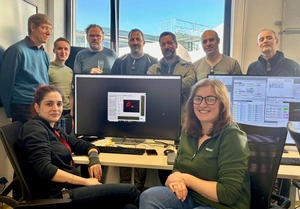
Breakthrough: First electron beam in SEALab advances accelerator physics
HZB team generates and accelerates an electron beam from a multi-alkali photocathode:
The SEALab team at HZB has achieved a world first by generating an electron beam from a multi-alkali (Na-K-Sb) photocathode and accelerating it to relativistic energies in a superconducting radiofrequency accelerator…

Optical innovations for solar modules – which are the most promising?
Experts provide a comprehensive overview of the state of solar research:
In 2023, photovoltaic systems generated more than 5% of the world’s electrical energy and the installed capacity doubles every two to three years. Optical technologies can further increase the efficiency of solar…

Catalysis research with the X-ray microscope at BESSY II
Scientists studied changes in catalysts during the synthesis of ammonia from waste nitrates:
Contrary to what we learned at school, some catalysts do change during the reaction: for example, certain electrocatalysts can change their structure and composition during the reaction when an electric field is…
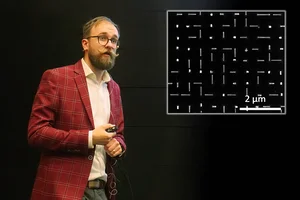
Owen C. Ernst awarded the DGKK Young Scientist Prize 2025
IKZ graduate honoured by the German association for crystal growth DGKK:
This year, the Deutsche Gesellschaft für Kristallzüchtung und Kristallwachstum e.V. (DGKK) awards IKZ graduate Dr. Owen C. Ernst with the Young Scientist Award, endowed with 2500 €, for his outstanding scientific…
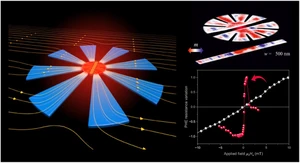
Magnetic ‘microflowers’ enhance magnetic fields locally
Flower-shaped microstructures offer amazing potential for a wide range of applications:
A flower-shaped structure only a few micrometres in size made of a nickel-iron alloy can concentrate and locally enhance magnetic fields. The size of the effect can be controlled by varying the geometry and number of…
The future of energy: recommendations from science to politics
Helmholtz-Zentrum Berlin involved in drafting position papers on energy and materials research and circular economy:
Experts from HZB have contributed their expertise to the position papers briefly presented here. The topics include the development of innovative materials for a sustainable energy supply and the circular economy.…
Agreement on EUV reflectometry between PTB and ZEISS extended until the end of 2029
Cooperation strengthens the European technology network:
PTB's laboratory for metrology with synchrotron radiation in Berlin-Adlershof is an important node in the network of European research infrastructure that has helped to enable the monopoly position of European…

New Young Investigator Group funded by BMBF at HZB
The physicist Dr Artem Musiienko aims to significantly accelerate the development of tin-based perovskite solar cells:
In the COMET-PV project, Dr Artem Musiienko aims to significantly accelerate the development of perovskite solar cells. He is using robotics and AI to analyse the many variations in the material composition of…
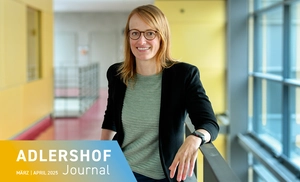
skills4chips—The talent factory for a future industry
The Microtec Academy will be expanded to form a national educational academy for microelectronics and microsystems technology:
Microelectronics has long been an essential part of our lives. Countless small and large everyday devices have a beating heart made of silicon and other semiconductors. And while Germany plays a leading role in…
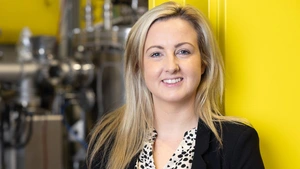
Dr. Michelle Browne receives Daimler and Benz Foundation Fellowship
At HZB, she is developing better catalysts for the production of green hydrogen:
Michelle Browne heads a Helmholtz Young Investigators Group on electrocatalysis at HZB. She has now been selected as a fellow of the Daimler and Benz Foundation. She will receive 40,000 euros over the next two years…
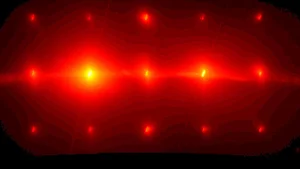
Artificial twisted-crystalline structures created at the IKZ
Novel complex crystal structures expand the possibilities of modern materials science:
Novel complex crystal structures beyond what could be grown with traditional methods can be created using layer transfer. This applies in particular to twisted crystalline oxide structures. The microscopic structure…
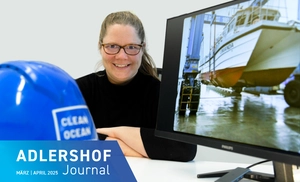
Cleaner coatings for ships
Clean Ocean Coatings is developing an environmentally friendly alternative:
“Water is life, and that life will inevitably show itself,” says Christina Linke. Any object that ends up in the ocean will soon be colonised. First, a biofilm forms, followed by algae, and eventually barnacles. “In…
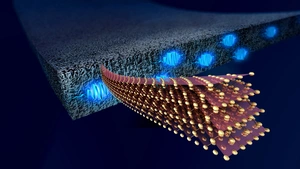
HZB team analyses mesoporous silicon
The modification of the semiconductor promises great potential for technical applications:
Silicon is the best-known semiconductor material. However, controlled nanostructuring drastically alters the material's properties. Using a specially developed etching apparatus, a team at HZB has now produced…
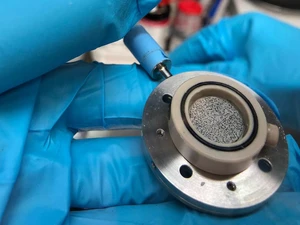
Innovative battery electrode made from tin foam
The material could make lithium batteries more robust and efficient:
Metal-based electrodes in lithium-ion batteries promise significantly higher capacities than conventional graphite electrodes. Unfortunately, they degrade due to mechanical stress during charging and discharging…
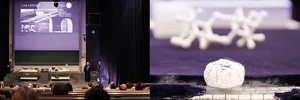
IKZ and HU Berlin open Joint Laboratory JAMA
The laboratory offers state-of-the-art infrastructure for research in the fields of solid-state physics and materials science:
The Joint Laboratory for Advanced Magneto-Transport Adlershof (JAMA) was officially opened on January 29, 2025. The new laboratory is a joint project of the Leibniz-Institut für Kristallzüchtung (IKZ) and the…
Events / Dates
16.30 - 18.00
Leap Quantum Technology Hub & Events
13.00
Max-Born-Saal
14.00 - 15.30
WISTA Conventions
00.00
09.00 - 16.00
WISTA conventions
WISTA Conventions
09.00
14.00
Bundesanstalt für Materialforschung und -prüfung (BAM) at Europa-Center
14.00 - 15.30
Erwin-Schrödinger-Zentrum
WISTA Event Centre
14.00 - 15.30